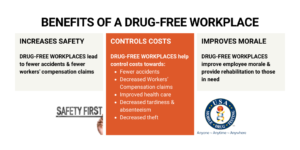Last updated : March 31, 2025
Want to know more about USA Mobile Drug Testing of Northeast Ohio’s drug free workplace training?
Here is an overview that gives you a behind the scenes look at some of the most important information covered in our drug free workplace training program.
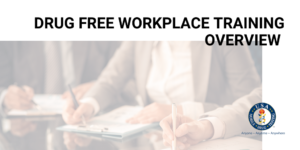
Do you know the difference between drug use, drug misuse, and addiction?
Our drug free workplace training starts with defining the difference between drug use, drug misuse, and addiction with information provided by the National Institute on Drug Abuse (NIDA):
- Drug use refers to any scope of use of illegal drugs.
- Drug misuse is used to distinguish improper or unhealthy use from use of a medication as prescribed or alcohol in moderation. These include the repeated use of drugs to produce pleasure, alleviate stress, and/or alter or avoid reality. It also includes using prescription drugs in ways other than prescribed or using someone else’s prescription.
- Addiction refers to substance use disorders at the severe end of the spectrum and is characterized by a person’s inability to control the impulse to use drugs even when there are negative consequences. These behavioral changes are also accompanied by changes in brain function, especially in the brain’s natural inhibition and reward centers.
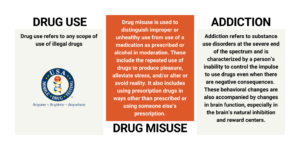
What is the difference between physical dependence, tolerance, & addiction?
It’s also important to understand the difference between physical dependence, tolerance, and addiction.
- Physical dependence can occur with the regular use of any substance, legal or illegal, even when taken as prescribed. It occurs because the body naturally adapts to regular exposure to a substance. When that substance is taken away, symptoms can emerge while the body re-adjusts to the loss of the substance (withdrawal). Physical dependence can lead to craving the drug to relieve the withdrawal symptoms.
- Tolerance is the need to take higher doses of a drug to get the same effect. It often accompanies dependence, and it can be difficult to distinguish the two.
- Addiction is a chronic disorder characterized by drug seeking and drug use that is compulsive, despite negative consequences. When someone is addicted to a substance, it becomes a complex brain disease.
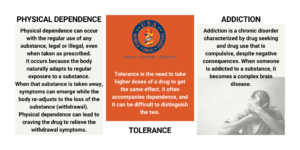
Drug use trends in the workplace
Now that you have a better understanding of drug use terms, our training covers the latest trends of drug use in the workplace.
Did you know that more than 70% of all individuals who mis-use substances in the US hold down at least one job?
The image below shares other surprising facts about employees who mis-use substances in the workplace:
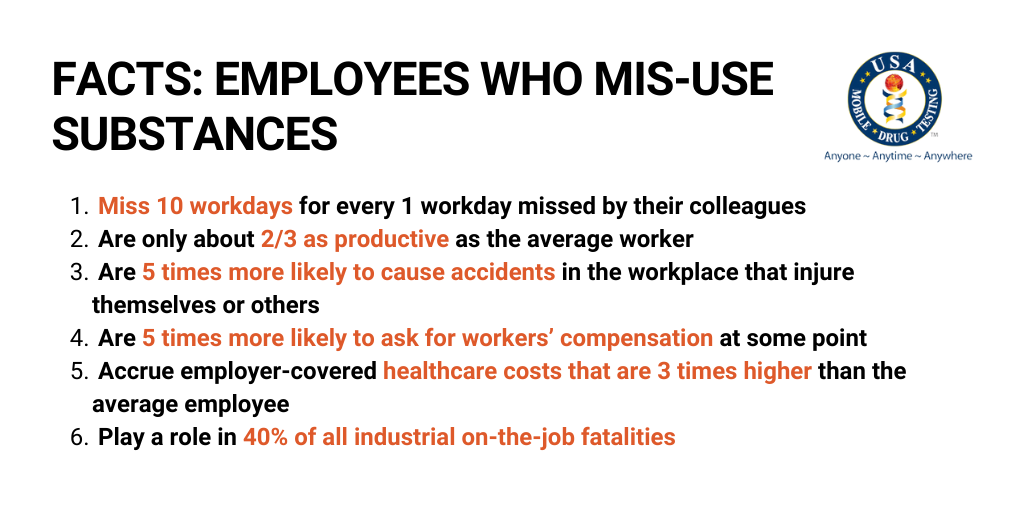
These stats, along with others covered in our drug free workplace training program, reinforce the importance of having a drug-free workplace policy.
Did you know that having a drug-free workplace provides your company with the following benefits?
Lastly, our training covers the benefits of having a drug free workplace policy. Here is an overview:
- INCREASES SAFETY by having a drug-free workplace leading to fewer accidents & fewer workers’ compensation claims
- CONTROLS COSTS towards fewer accidents, decreased Workers’ Compensation claims, improved health care, decreased tardiness & absenteeism, and decreased theft
- IMPROVES MORALE among employees & provide rehabilitation to those in need
